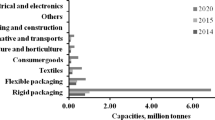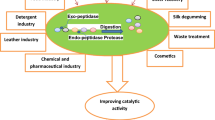Abstract
Purpose
Polysorbates are critical stabilizers in biopharmaceutical protein formulations. However, they may degrade in drug substance (DS) or drug product (DP) during storage. Degradation catalyzed by lipases present in host cell proteins (HCPs) is one suspected root cause. The purpose of this study was to develop an assay to detect lipolytic activity in biopharmaceutical DS and DP formulations.
Methods
The assay is based on the hydrolysis of the lipase substrate 4-methylumbelliferyl oleate to yield the fluorescent product 4-methylumbelliferone.
Results
First, the assay components and their concentrations (buffer salts and pH, solvent and inhibitor Orlistat) were established and optimized using a model lipase (Porcine pancreatic lipase) and cell culture harvest fluid that exhibited lipolytic activity. The assay was then successfully applied and thereby qualified in protein formulations and at lipase concentrations possibly encountered in actual biopharmaceutical DS and DP formulations.
Conclusion
The lipase assay can be used to detect lipolytic activity in intermediate and final DS, for example during process optimization in downstream purification, to better and specifically reduce the level, or deplete, lipases from HCPs. The assay is also suitable to be applied during root cause investigations related to polysorbate degradation in biopharmaceutical DP.










Similar content being viewed by others
Abbreviations
- API:
-
Active pharmaceutical ingredient
- BIS-TRIS:
-
Bis(2-hydroxyethyl)amino-tris(hydroxymethyl)methan
- CCHF :
-
Cell culture harvest fluid
- CHO:
-
Chinese hamster ovary
- DMSO:
-
Dimethyl sulfoxide
- DP:
-
Drug product
- DS:
-
Drug substance
- ELISA :
-
Enzyme-linked immunosorbent assays
- FMA:
-
Fluorescence micelle assay
- HCMB:
-
High concentration matrix buffer
- HCP:
-
Host cell protein
- HPLC:
-
High performance liquid chromatography
- IPA :
-
Iso-propanol
- mAb:
-
Monoclonal antibody
- MeOH:
-
Methanol
- 4Mu :
-
4-Methylumbelliferone
- 4MuO :
-
4-Methylumbelliferyl oleate
- 4 Np :
-
4-Nitrophenol
- NPN :
-
N-Phenyl-1-naphtylamine
- PLBL2:
-
Phospholipase B-like 2
- PPL :
-
Porcine pancreatic lipase
- NEH:
-
Non enzymatic hydrolysis
- PS20:
-
Polysorbate 20
- PS80:
-
Polysorbate 80
- RT:
-
Room temperature
- TRIS:
-
Tris(hydroxymethyl)aminomethane (commercial abbreviation: Trizma®)
- w/v :
-
Weight to volume ratio
References
Khan TA, Mahler HC, Kishore RS. Key interactions of surfactants in therapeutic protein formulations: a review. Eur J Pharm Biopharm. 2015;97:60–7.
Borisov OV, Ji JA, Wang YJ, Vega F, Ling VT. Toward understanding molecular heterogeneity of polysorbates by application of liquid chromatography-mass spectrometry with computer-aided data analysis. Anal Chem. 2011;83:3934–42.
Li Y, Hewitt D, Lentz YK, Ji JA, Zhang TY, Zhang K. Characterization and stability study of polysorbate 20 in therapeutic monoclonal antibody formulation by multidimensional ultrahigh-performance liquid chromatography-charged aerosol detection-mass spectrometry. Anal Chem. 2014;86:5150–7.
Doshi N, Demeule B, Yadav S. Understanding particle formation: solubility of free fatty acids as polysorbate 20 degradation byproducts in therapeutic monoclonal antibody formulations. Mol Pharm. 2015;12(11):3792–804.
Ha E, Wang W, Wang YJ. Peroxide formation in polysorbate 80 and protein stability. J Pharm Sci. 2002;91(10):2252–64.
Kishore RS, Kiese S, Fischer S, Pappenberger A, Grauschopf U, Mahler HC. The degradation of polysorbates 20 and 80 and its potential impact on the stability of biotherapeutics. Pharm Res. 2011;28(5):1194–210.
Kiese S, Papppenberger A, Friess W, Mahler HC. Shaken, not stirred: mechanical stress testing of an IgG1 antibody. J Pharm Sci. 2008;97(10):4347–66.
Singh SK, Mahler HC, Hartman C, Stark CA. Are injection site reactions in monoclonal antibody therapies caused by polysorbate excipient degradants? J Pharm Sci. 2018;107(11):2735–41.
Kishore RS, Pappenberger A, Dauphin IB, Ross A, Buergi B, Staempfli A, et al. Degradation of polysorbates 20 and 80: studies on thermal autoxidation and hydrolysis. J Pharm Sci. 2011;100(2):721–31.
Dixit N, Salamat-Miller N, Salinas PA, Taylor KD. Residual host cell protein promotes polysorbate 20 degradation in a sulfatase drug product leading to free fatty acid particles. J Pharm Sci. 2016;105:1657–66.
LaBrenz S. Ester hydrolysis of polysorbate 80 in mAb drug product: evidence in support of the hypothesized risk after the observation of visible particulate in mAb formulations. J Pharm Sci. 2014;103:2268–77.
Hall T, Sandefur SL, Frye CC, Tuley TL, Huang L. Polysorbates 20 and 80 degradation by group XV lysosomal phospholipase A2 isomer X1 in monoclonal antibody formulations. J Pharm Sci. 2016;105:1633–42.
Chiu J, Valente KN, Levy NE, Min L, Lenhoff AM, Lee KH. Knockout of a difficult-to-remove CHO host cell protein, lipoprotein lipase, for improved polysorbate stability in monoclonal antibody formulations. Biotechnol Bioeng. 2017;114(5):1006–15.
Shukla AA, Hubbard B, Tressel T, Guhan S, Low D. Downstream processing of monoclonal antibodies--application of platform approaches. J Chromatogr B Analyt Technol Biomed Life Sci. 2007;848(1):28–39.
Champion K, Madden H, Dougherty J, Shacter E. 2005. Defining your product profile and maintaining control over it, part 2. Bioprocess Int. 2005;9:52–7.
Fischer SK, Cheu M, Peng K, Lowe J, Araujo J, Murray E, et al. Specific immune response to phospholipase B-like 2 protein, a host cell impurity in Lebrikizumab clinical material. AAPS J. 2017;19(1):254–63.
Zottig X, Meddeb-Mouelhi F, Beauregard M. Development of a high-throughput liquid state assay for lipase activity using natural substrates and rhodamine B. Anal Biochem. 2016;496:25–9.
Glogauer A, Martini VP, Faoro H, Couto GH, Müller-Santos M, Monteiro RA, et al. Identification and characterization of a new true lipase isolated through metagenomic approach. Microb Cell Factories. 2011;10:54.
Young PL, Guk HC, Joon SR. Purification and characterization of Pseudomonas fluorescens SIK W1 lipase expressed in Escherichia coli. Biochim Biophys Acta. 1993;1169(2):156–64.
Rappoport Z (Ed.). CRC Handbook of tables for organic compound identification. 3rd Edition. 1984, CRC press / Taylor and Francis, Boca Raton, FL, USA.
Mabey W, Mill T. Critical review of hydrolysis of organic compounds in water under environmental conditions. J Phys Chem Ref Data. 1978;7(2):383–415.
Kurihara H, Asami S, Shibata H, Fukami H, Tanaka T. Hypolipemic effect of Cyclocarya paliurus (Batal) Iljinskaja in lipid-loaded mice. Biol Pharm Bull. 2003;26(3):383–5.
Zhi H, Wang J, Wang S, Wei Y. Fluorescent properties of hymecromone and fluorimetric analysis of hymecromone in compound dantong capsule. J Spectroscopy. 2013; Article ID 147128, 9 pages.
Hadváry P, Sidler W, Meister W, Vetter W, Wolfer H. The lipase inhibitor tetrahydrolipstatin binds covalently to the putative active site serine of pancreatic lipase. J Biol Chem. 1991;266(4):2021–7.
Li Y, Zhou G, Li C, Qin D, Qiao W, Chu B. Adsorption and catalytic activity of porcine pancreatic lipase on rod-like SBA-15 mesoporous material. Colloids and surfaces a: Physicochem. Eng. Aspects. 2009;341:79–85.
Heck AM, Yanovski JA, Calis KA. Orlistat, a new lipase inhibitor for the management of obesity. Pharmacotherapy. 2000;20(3):270–9.
Asler IL, Zehl M, Kovacic F, Müller R, Abramic M, et al. Mass spectrometric evidence of covalently-bound tetrahydrolipstatin at the catalytic serine of Streptomyces rimosus lipase. Biochim Biophys Acta. 1770;2007:163–70.
Lewis DR, Liu DJ. Direct measurement of lipase inhibition by Orlistat using a dissolution linked in vitro assay. Clin Pharmacol Biopharm. 2012;1(3):1–3.
Gupta N, Rathi P, Gupta R. Simplified Para-nitrophenyl palmitate assay for lipases and esterases. Anal Biochem. 2002;311:98–9.
Johnson KA, Goody RS. The original Michaelis constant: translation of the 1913 Michaelis-Menten paper. Biochemistry. 2011;50(39):8264–9.
Lowe ME. The triglyceride lipases of the pancreas. J Lipid Res. 2002;43(12):2007–16.
Lookene A, Skottova N, Olivecrona G. Interactions of lipoprotein lipase with the active-site inhibitor tetrahydrolipstatin (Orlistat)R. Eur J Biochem. 1994;222:395–403.
Brito RMM, Vaz WLC. Determination of the critical micelle concentration of surfactants using the fluorescent probe N-phenyl-1-naphthylamine. Anal Biochem. 1986;152(2):250–5.
Khossravi M, Kao YH, Mrsny RJ, Sweeney TD. Analysis methods of polysorbate 20: a new method to assess the stability of polysorbate 20 and established methods that may overlook degraded polysorbate 20. Pharm Res. 2002;19(5):634–9.
Author information
Authors and Affiliations
Corresponding author
Additional information
Publisher’s Note
Springer Nature remains neutral with regard to jurisdictional claims in published maps and institutional affiliations.
Electronic supplementary material
ESM 1
(DOCX 146 kb)
Rights and permissions
About this article
Cite this article
Jahn, M., Zerr, A., Fedorowicz, F.M. et al. Measuring Lipolytic Activity to Support Process Improvements to Manage Lipase-Mediated Polysorbate Degradation. Pharm Res 37, 118 (2020). https://doi.org/10.1007/s11095-020-02812-0
Received:
Accepted:
Published:
DOI: https://doi.org/10.1007/s11095-020-02812-0




